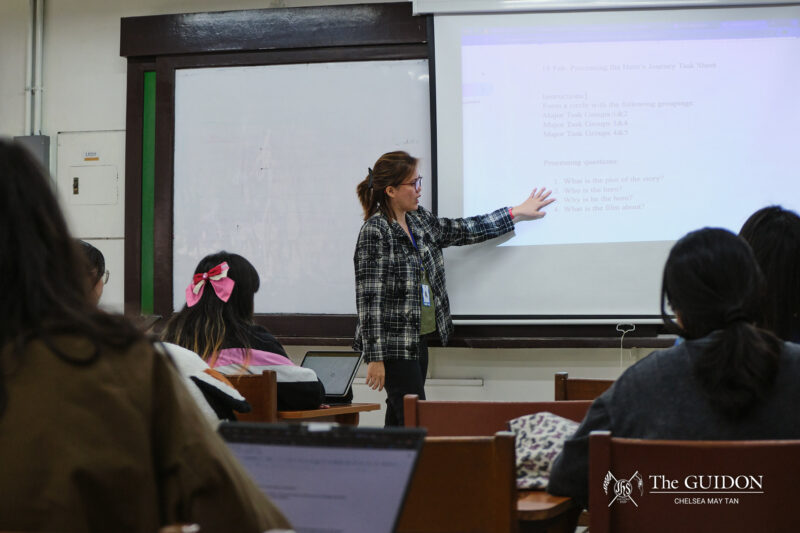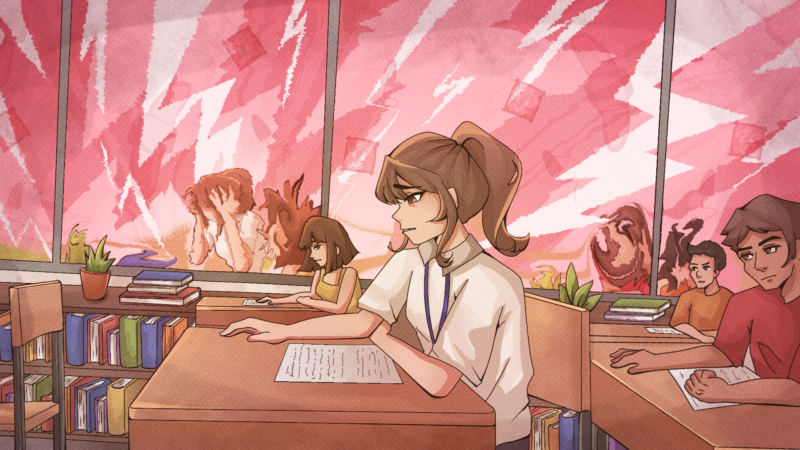The routine is all too familiar: it’s the last few days of the semester, and every professor instructs all of his students to log-on to their AISIS accounts.
“Don’t forget to accomplish your professor evaluations,” everyone is told. Indeed, the school seems to have skillfully integrated an effective faculty feedback mechanism in the grind of university life.
With varying degrees of success, the incessant reminders drill it in every student’s mind: feedback is an integral part of any academic relationship. The evaluation process, after all, is designed to help professors act in accordance to their individual strengths and weaknesses.
But what happens when feedback is ignored? A few months ago, The GUIDON received an email from a faculty member*, detailing his concerns on how the school handles students’ feedback on their teachers. He claims that the Ateneo seems to not put as much premium on feedback as other schools, especially foreign universities.
Is the school really doing enough in terms of feedback mechanisms? On the surface, the tedious AISIS evaluations would make students believe that the Ateneo is interested in what they have to say. But the professor who emailed The GUIDON thinks otherwise.
“I remember… how some students would complain to me about their other courses and I tell them to write [about] it in the evaluations,” he wrote. “But it seems no action is done by [the department] chair or teachers themselves to incorporate student feedback to their courses.”
Feedback routine
Faculty evaluation takes place every end of the semester. With the constant threat of a hold order as punishment for not accomplishing the task, Ateneans make time to log-on to their AISIS accounts and fill up the questionnaires on his or her professors’ performance.
“Usually, the regular evaluations close on the Sunday during exam week,” says Cynthia Totanes, who takes charge of faculty evaluations in the Office of the Associate Dean for Academic Affairs (ADAA). She explains that the school deans and department chairs receive evaluations before grades are given; the professors themselves only get to see their students’ feedback after the release of grades.
ADAA Eduardo Calasanz says that the follow-through to the evaluations is the responsibility of the department chairs, the “immediate academic supervisors of the faculty members.”
“In cases where there is an important issue involved, or [when there is] an overwhelmingly negative evaluation, perhaps the dean would take an interest,” he explains. “But the one who is primarily responsible for [the follow-through] is the department chair.”
Flaws in the system
Students like Mark*, a senior, and Maria*, a freshman, both agree on the importance of faculty evaluations. “Evaluations help professors grow as educators and, in turn, help students learn better as well. It really helps both parties, so it’s important that they’re accomplished,” Mark says.
Maria, however, decries some teachers’ dismissive attitude towards feedback. “It’s a very tedious process for the student,” she says. “It takes hours at times, so it is frustrating if the teacher’s response is to just dismiss the feedback.”
While Mark says he knows of professors who “get scolded for receiving [bad feedback]” and “teachers who became nicer or graded in a fairer way after [evaluations],” some students recount experiences in which they think feedback was not treated properly.
Samuel*, a freshman, had such an experience. “I have had a teacher who responded rather negatively to feedback that his teaching methods were too fast-paced,” he said. “He told the class off, and suddenly it was a regret to have written anything [in the evaluation forms] at all.”
Maria speaks of a similar ordeal. “I have a friend who once told a professor directly that she felt he neglected to submit test results on time,” she recounts. “When we received our final marks in his class, she received a mark lower than mine, despite the fact that she had better quiz and test scores, and we were group mates in our oral reports, [which would make our] recitation grades the same.”
No ‘exact place’
Calasanz recognizes such incidents. The concerns raised by the professor who communicated with The GUIDON through email seem to hold water.
In clear, exact language, the email’s author stated that he found the Ateneo’s treatment of feedback sad “because other universities really make it a point to evaluate whether course objectives are met, and [whether] a teacher’s teaching philosophy is articulated well when they are hired.”
“I don’t feel that Ateneo makes it a point to listen enough to students and consider their evaluations thoughtfully,” he wrote.
True enough, Calasanz explains that the role of student feedback in faculty assessment still remains in question. “We haven’t quantified the exact place of student evaluations,” he admits. “Up to this point, it remains an informal element in the formal, total evaluation.”
Calasanz explains, however, that student feedback still has a bearing on the concerned teachers’ career paths. “[Feedback is still] included in teachers’ total evaluation… It also becomes a factor in considerations for permanency,” he says. “After two or three years, it can also have a part in promotion; that is all within the jurisdiction of the Committee on Faculty Rank and Permanent Appointment.”
Nevertheless, despite the informal role of student feedback on faculty assessment, Calasanz sees great value in the evaluations. “It is important to take note that what is most important is the qualitative evaluation,” he says.
Building your own education
Structural flaws in the system notwithstanding, there are more practical matters that the concerned offices can immediately address: that of students’ awareness and of students’ security from possible retaliation from a teacher.
“I’d like to know that teachers won’t get angry when I write something not so pleasant down on their evaluations, as long as I state them respectfully,” Samuel says. “I think knowing that [students] won’t get in trouble is important for us when [we evaluate our teachers].”
“I honestly would like to know more about the system,” Maria comments. She also believes that the knowledge of how evaluations can help teachers “will help students take the feedback-writing more seriously.”
The ADAA assures that feedback remains anonymous as they are accessed by the faculty, and explains that such a system is essential in one’s education.
“When encountering these kinds of problems with teachers after evaluations, it is very important [for those affected] to tell us,” Calasanz says. “Otherwise, we won’t know which teachers are using the student evaluations as an occasion to get back at their students.”
With this, Calasanz implores the student body to take faculty evaluation more seriously. He believes that it is one way to participate “in building your own education and building your school.”
He also asks the students to address complaints to offices or groups who are capable of assisting, such as his office or the Sanggunian. “Tell us if there are teachers who threaten or intimidate,” he says. “Of course, some [department] chairs are more welcoming than others, but I would like to think that the Sanggunian and the ADAA are concerned. So don’t hesitate to come to us.”
Further ahead
On the more structural concerns, such as those raised by the professor who emailed The GUIDON, Calasanz assures students that the school is working towards better assessment and examination of student feedback.
“One of the things we hope to do is to integrate things learned in feedback into teachers’ development institutes and the faculty formation programs in the Ateneo,” Calasanz says. “We are working towards building the Office of Qualitative Assurance, which will be the domain for this.”
The Associate Dean’s words are reassuring, but just like a department chair’s role in the evaluations of his or her colleagues, there is a need for a follow-through. Otherwise, the feedback on feedback will have about just as much teeth and impact as the often maligned and discounted AISIS evaluations.
*Real name has been withheld to protect the individual.






